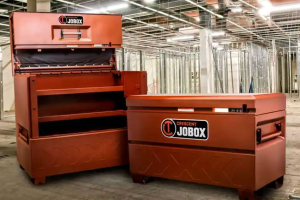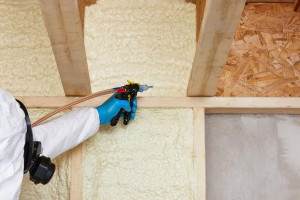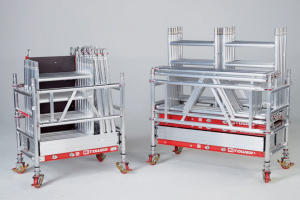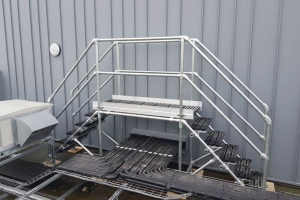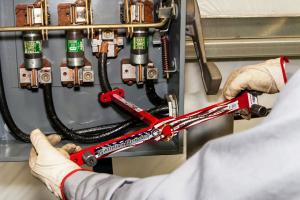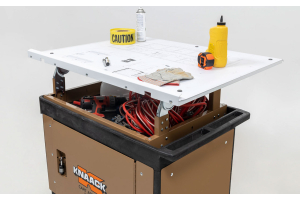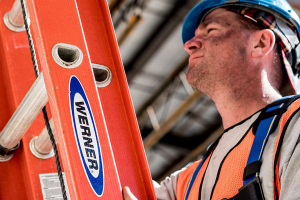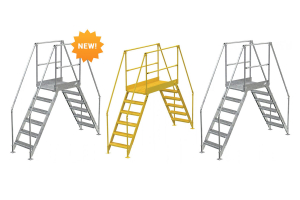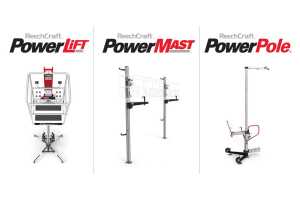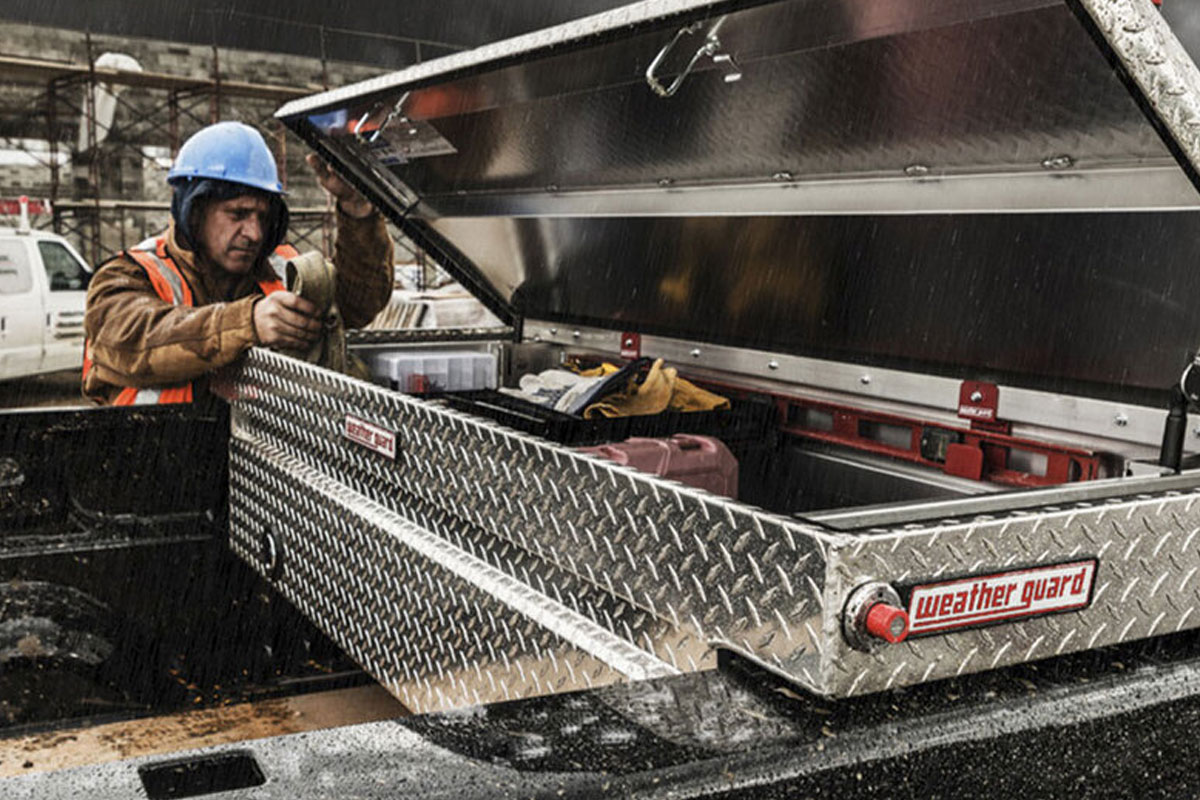
The Coronavirus pandemic has affected almost every aspect of our lives. Things like going to work have been made more complicated as we all undertake the responsibility of making sure the disease spreads as little as possible.
Our friends at Werner, industry leading manufacturers of ladders and other jobsite equipment, have put together some helpful tips on how to clean three of the most commonly used pieces of equipment on the jobsite: toolboxes/storage equipment, ladders, and PPE equipment.
If you’ve been searching for little things you can do to help better protect you and your coworkers, regularly cleaning and disinfecting your equipment is a great place to start!
How to properly clean your toolboxes and storage products
If possible, wear disposable gloves when cleaning and disinfecting surfaces. When you’ve finished cleaning and disinfecting, throw out the used pair of gloves. If you do not have any access to disposable gloves, dedicate a pair of gloves to be used strictly for cleaning and disinfecting. Be sure to properly mark the gloves as your cleaning gloves and store them separately from the rest of your work gloves.
For powder coated products:
CLEANING:
Start by combining a mild detergent or soap with water. Apply to the product with a rag, frequently applying more soap solution onto the rag as you clean. Once the product has been thoroughly cleaned, rinse off any excess soap and thoroughly dry with a clean rag. Drying your product off is an important step as it prevents potential rusting.
DISINFECTING:
For disinfecting your toolboxes and storage, you should be able to use any standard over the counter cleaners without issue. If you plan to use a cleaner that contains bleach, do not use a solution containing more than 10% bleach. If you’d prefer to use bleach, you can create a dilluted solution of bleach using water. Be careful if using bleach! Disinfecting directly with bleach or with a high concentration of bleach can discolor the finish of your powdercoating.
For non powder coated products:
CLEANING:
Similar to powder coated products, start by cleaning all surfaces of your product with a solution of mild soap or detergent with water. Be sure to thoroughly dry your product off with clean rags before disinfecting.
DISINFECTING:
You can use any over the counter cleaner with a rag to wipe down and disinfect your non powder coated products. If you use a product containing bleach, make sure to use a solution containing no more than 10% bleach. If the bleach in the product is in a high concentration, you can dilute it in a solution with water. If oxidation begins to appear over time on surfaces such as aluminum, non-powder coated product as a result of your disinfecting, use an oxidation remover and microfiber towel to remove any stains.
How to properly clean your work ladders
Ladders are an essential tool on many jobsites, but they are also frequently shared among many workers. If possible, try to reduce how many people share each ladder. Ideally, only one person would use a specific ladder on your jobsite as this would better prevent the transfer of germs from one person to another. If you do have to share equipment, be sure to wear disposable or designated gloves that are frequently cleaned while handling shared equipment.
Step 1:
Lay your ladder out flat on a clean and dry surface. Start by wiping off any foreign substances including anything that is slippery, greast, or sticky.
Step 2:
Mix a mild cleaning solution of warm water and laundry detergent or dish soap.
Step 3:
Take a clean dry scrubbing brush and dip it into the cleaning solution, then scrub the ladder thoroughly, paying close attention to any stubborn sticky spots.
Step 4:
Use a clean sponge or rag dipped in a separate supply of clean water, then use it to wipe down/rinse the ladder of the suds and soap residue leftover from scrubbing. The steps and rails of your ladder may become slippery if all the soap isn’t completely rinsed off, so make sure to double check the entire ladder and repeat this step as needed to properly rinse the ladder off.
Step 5:
Wipe the entire ladder down with a clean dry towel.
Step 6:
The final step is to disinfect the ladder with an alcohol-based disinfectant. You can find these in many stores, or create a solution using isopropyl alcohol and water. This should evaporate on its own and then the ladder will be ready for more use.
How to properly clean your fall protection and other PPE equipment
Step 1:
Place the equipment on a clean flat surface in a well-lit area, leaving it easily open to visible inspection.
Step 2:
Use a damp sponge to remove excess grime and dust from the equipment.
Step 3:
Mix a mild cleaning solution of water with laundry detergent or dish soap. DO NOT use disinfectants that contain bleach, chlorine, or other harsh chemicals. Never use gasoline or other ‘drying solvents’ to clean your equipment.
Step 4:
Dip the sponge into the solution and thoroughly scrub each portion of the equipment until a thich lather or suds appear. Dampen but do not soak the equipment. Using a separate sponge dipped in clean water, wipe down the equipment to remove the suds and soap.
Step 5:
Hang the equipment in a cool, dry, clean environment, out of direct sunlight until completely dry. Do not use a mechnical heat dryer or long periods of sun-drying on equipment such as harnesses, as it can cause damage to the harness and create safety issues. Cleaning is actually a great time to inspect equipment such as harnesses for damage to the webbing and hardware, and can be established as part of routine maintenance and safety checks.
If cleaning multiple pieces of equipment, make sure you hang each piece with enough separation that they have room to properly dry.
Other steps you can take to increase jobsite cleanliness
In addition to cleaning your equipment, it is ideal to share as little of your equipment as possible. If possible, have you and your coworkers maintain at least a 6 foot disance from one another while on the jobsite.
If you or anyone you interact with frequently begins to show symptoms associated with COVID-19, contact a physician or your local health agenices for further guidelines.
This is a challenging time for workers in all fields, but by doing your part you can help fight the crisis and flatten the curve. These small steps all help make the care of seriously ill patients easier for the world’s medical professionals, and prevent more people from getting sick. We hope you are able to stay safe and stay well!

